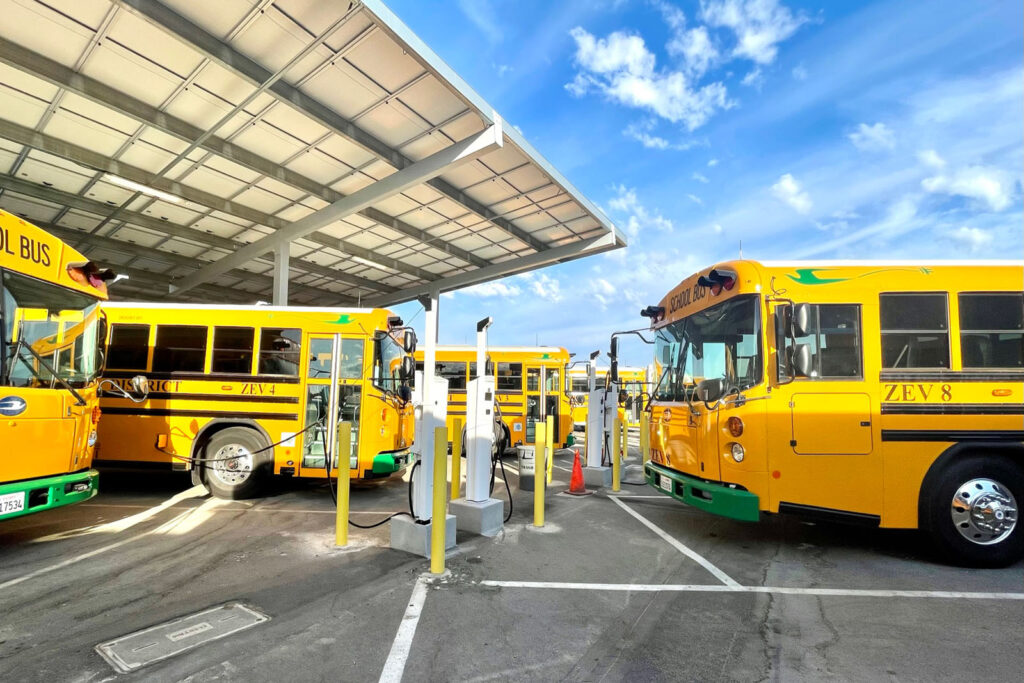With the enactment of New York State’s 2022-23 budget, the state set into motion a plan that requires all new school buses purchased to be zero emissions starting in 2027 and all school buses operating to be electric by 2035. This transition to an all-electric fleet will have positive long-term environmental, public health and financial benefits for communities. It also presents a number of challenges for New York State School Districts. These challenges include the cost and availability of zero-emission vehicles (ZEVs) and the creation of infrastructure to support the ownership and operation of an all-electric fleet.
BBS has partnered with energy and transportation consultants to help school districts prepare for these ambitious goals as set forth by the state. Our E-Bus Transition services include an in-depth study of a district’s needs and financial capabilities, and helps them create a plan for the design and construction of the required infrastructure.
Determining District Capabilities
BBS begins by studying the status of a District’s current fleet and assessing the physical infrastructure needed to meet the State’s goals. We review the number of buses the district owns, the length and timing of their routes, the type of terrain the buses traverse on a daily basis, the district’s infrastructure for the construction of charging stations, the capabilities of the local power grid to support the charging stations and other factors related to operating an electric fleet.
Examining Financial Resources
Our assessment also includes an estimate of the financial resources needed to deploy zero-emissions transportation services, explores building or transportation aid eligibility, and identifies potential funding sources available. With the cost of electric-buses ranging from $300,000-400,000 each (as opposed to $100k-$200k for diesel buses) and charging stations at as much as $40,000 each, the costs of transitioning may seem insurmountable. But a number of State and Federal programs exist to help with costs including:
- $5 billion in funding for clean school buses over 5 years through the EPA per 2021 Bi-Partisan Infrastructure Act.
- School Bus replacement aid can also be accessed through the EPA’s $1 billion Clean Heavy Duty Vehicle Program established by the Inflation Reduction Act of 2022.
- The NY State Clean Water, Clean Air and Green Jobs Act of 2022, passed by voters last November, includes $500m for e-Buses.

Infrastructure Design Services
Once a full assessment of a district’s needs and capabilities is complete, BBS can outline the design services necessary. These services can include:
- Coordinating with local utilities to ensure adequate electrical capacity for infrastructure
- Electrical Engineering for bus charging stations
- Design of bus canopies with solar panels to help districts generate their own renewable energy to offset the power required to charge an electric bus fleet
- Preparation of SED paperwork to maximize state building or transportation aid
New York State’s transition to e-school buses is an ambitious step toward a cleaner and safer environment for all residents. We know that with big change comes big challenges. BBS is ready to work with your school district every step of the way to meet these challenges. For more information, please contact Fred Seeba, PE, LEED AP, Managing Partner, at seeba@bbsarch.com or (631) 475-0349.
